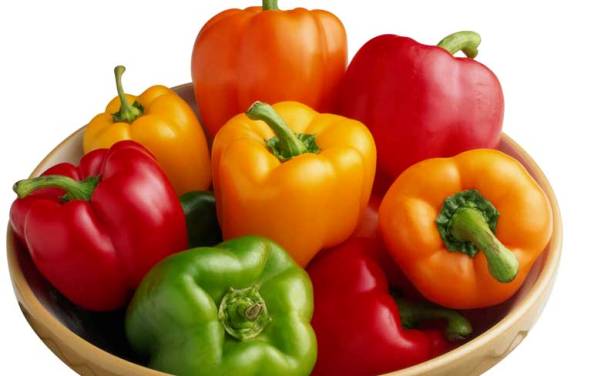
To grow a rich harvest of fortified, tasty and juicy sweet peppers is the dream of any gardener. Most varieties of this thermophilic crop have excellent fertility rates. Beginners, often guided only by this characteristic, acquire seeds and wait for large yields, but in the end they come to disappointment.
Let's see why this happens. Consider the most productive varieties of sweet pepper for open ground and greenhouses.
How to get a high yield
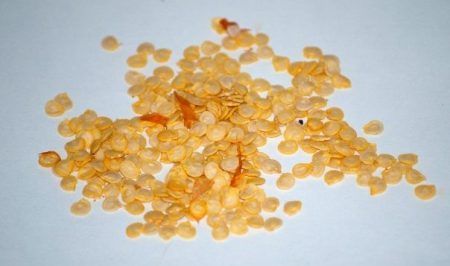
You need to choose the right seeds. It is worth considering the ripening period and the conditions in which the variety can be grown. Some peppers give a good harvest only in greenhouses, while others are preferably grown in open ground. But there are universal hybrid or varietal peppers that are resistant to low temperatures and dry periods. They do not lose their fertility in any conditions.
Seed selection is just the beginning! To get a rich harvest of peppers, it should be remembered that the culture is very demanding for care, those gardeners who clearly follow all the rules of agricultural technology get good results. Peppers in Russia are grown only through seedlings.
Seeding rules
The packaging usually shows the sowing dates, however, for beginners it is better to consult with more experienced gardeners from their region. In most of Russia, seeds are sown in February or early March. The culture is planted in unprotected soil when return frosts pass and the topsoil (up to 10 cm deep) warms up to 15–16 degrees. This period falls in mid-May and early June.
It is very important to successfully select the timing of sowing. If the culture is late, it does not have time to give the crop to the cold weather. And if you sow the seeds too early, the peppers will outgrow and bloom in pots. In conditions of insufficient lighting and nutrition, this will lead to severe depletion of the plant, it will drop flowers and will set new ones for a long time. At the time of transplanting, each bush should have 8 or 9 true leaves.
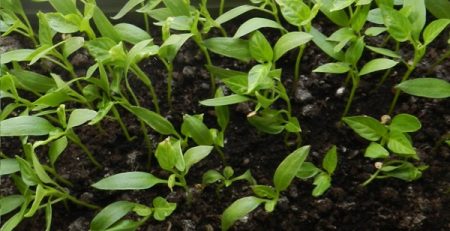
General recommendations:
- early ripe peppers are sown 65 days before the intended date of planting;
- mid-ripening varieties and hybrids can be sown 65 or 70 days before planting in a permanent place;
- late-ripening peppers are sown 75 days before planting.
If picking will be carried out when growing seedlings, these periods should be increased by 8 or 10 days. Seedlings during transshipment are suspended in growth. It should be taken into account not only the ripening period, but also the conditions for growing the crop; for greenhouses, pepper can be sown a little earlier. And also we must not forget that the seeds of the crop sprout for a long time. Before sowing, you need to sort out the grains, all dark or broken specimens are discarded.
Germination
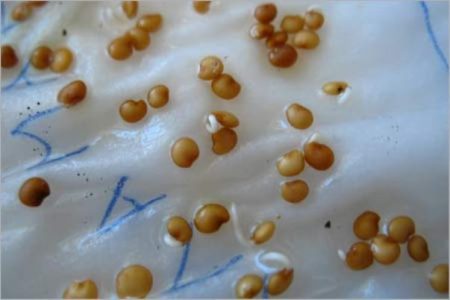
It is difficult to guess how long it will take to hatch the seeds, and seedlings need to be grown on time. In order not to get confused in the timing, the grains are treated with growth stimulants. You can use purchased drugs or prepare a nutrient solution yourself:
- food - a tablespoon of crushed wood ash is poured into 0, 5 liters of water, mix well and leave the mixture to infuse for 2 days.Next, seeds are immersed in the resulting solution (in a tissue bag) for 4 or 5 hours.
- soaking - the grains after processing in the nutrient mixture can not be washed and not dried. A piece of gauze should be prepared and seeds placed on its surface. Now the gauze needs to be folded so that all the grains are inside, but if possible they do not touch each other. The bundle is moistened, laid on a saucer, and placed in a transparent bag so that air remains inside.
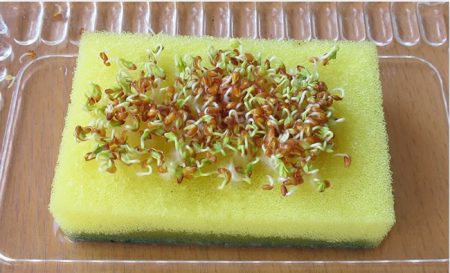
The container with seeds should be kept warm; the optimum temperature for germination is considered to be between 23–28 ° C. The first bores will hatch after 2 or 3 days, now you can start sowing.
Seedling planting
In prepared containers filled with soil, put the seeds at a distance of 1, 5 or 2 cm from each other. Now seedlings should be sprinkled with a centimeter layer of earth and watered with settled water at room temperature. After sowing, the container is covered with a transparent material and placed in a warm place (25–27 ° C).
From time to time, shelter removes and moistens the soil, it is very important that it does not dry out. The first shoots will hatch after 1 or 2 weeks. When sprouts appear, the package or glass can be removed and the seedlings rearranged on a light windowsill. What you need to know:
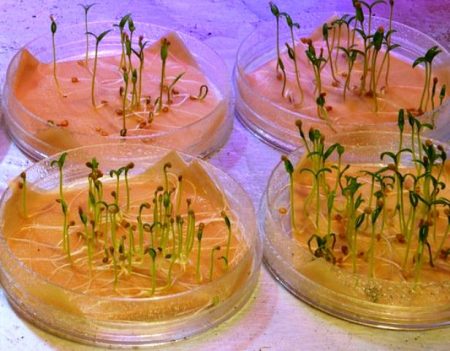
- during the day, the room temperature should be kept at 22–25 ° C, and at night 16–18;
- in the room with seedlings there should be no drafts, and excessively dry air is harmful to young plants;
- watering is carried out, as soon as the top layer of soil begins to dry out, the water should be warm. It is impossible to underfill or overflow seedlings;
- about 9 hours of light per day is enough for the pepper, if possible he needs to provide additional lighting.
About 20 or 25 days after hatching, the seedlings acquire two real leaves. Just at this time, you can pickle seedlings.
Pick
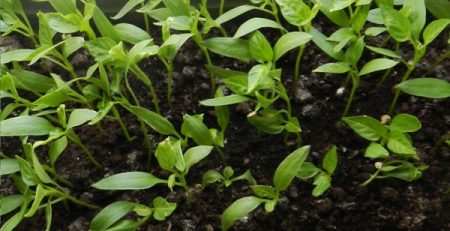
For the pick, the best seedlings are chosen, those who hatch first are considered especially good. 2 hours before the start of the procedure, plants are abundantly watered with water. The prepared containers are filled with soil and pits are made in it with a depth of up to 6 cm. The bores with a lump of earth are gently reloaded into containers. Trunks of seedlings are buried no more than 2 cm. Now the seedlings should be abundantly watered.
Before planting plants in open ground, you must constantly monitor the soil moisture. Do not lower the air temperature and neglect the additional lighting. 10-14 days before disembarkation begin hardening. You can transfer the plant to a cooler room or open the windows in the room, first for 15 minutes and gradually increase the time.
Watering
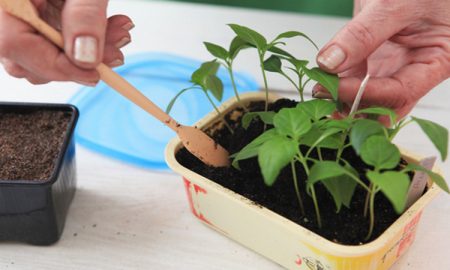
The first watering of pepper is carried out immediately after planting, the second after 5 or 7 days. Further, the culture is watered every 7-10 days. At the first stages, one liter of water is enough for one bush, then the amount of liquid is gradually increased to 3 liters. Once every 2 weeks, loosen the soil. 2 or 3 weeks before harvesting, watering is stopped.
Fertilizers
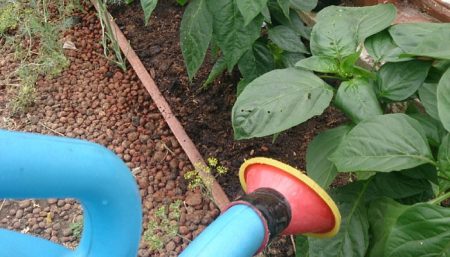
Seedlings are fed once every 2 weeks, experienced gardeners advise using the complex fertilizer Tsitovit (1 ml per liter of water). After planting, they are fertilized as follows:
- 2 weeks after planting, peppers are fed with mullein or chicken droppings. Based on 10 liters of water, 1 liter of the first fertilizer or half a liter of the second is taken. Under each bush, no more than a liter of solution is poured;
- the second top dressing is carried out during the flowering period. You can use potassium sulfate, superphosphate, ammonium nitrate (according to the instructions) or the same solutions as for the first feeding, but with the addition of 2 tbsp. l potassium monophosphate;
- The following dressings are carried out during the period of formation and filling of the fruits, it is advisable to alternate the fertilizer.
Nitrogen supplements - mullein, chicken, ammonium nitrate and urea are especially important during flowering.During the fruiting period, peppers need phosphorus (superphosphate), and also wood ash can be added to the soil (2 cups per 1 m²).
Mulching
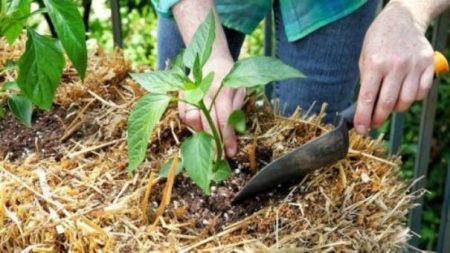
The procedure can save peppers from the rapid evaporation of moisture during dry periods. As mulch, you can use straw, as well as freshly cut or pre-dried grass. On top of the grass, you can lay a small layer of rotted sawdust.
Bush formation
Stepsons on pepper bushes take power from the main branches on which the best fruits are tied. Most varieties and hybrids form in 2 or 3 stems. All stepsons and leaves in the lower part of the bush should be removed (leaving stumps about 3 mm) to the main fork. On the main branch, you need to pinch the side branches, after the first ovary.
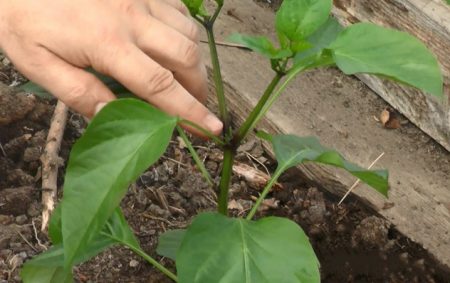
Properly formed bushes will be well ventilated and illuminated, and the fruits will receive all the necessary nutrition from the soil. You can not neglect pruning, all the extra leaves and branches will take power from the plant. Peppers that are formed on excess stems will be small, thin-walled, hard, and they are unlikely to have time to ripen before the cold.
The most productive varieties of pepper
Armed with useful information and important tips regarding the cultivation of pepper, you can proceed to the selection of seeds for your garden. We turn to the description of the most prolific varieties that actively form the ovaries and consistently give good yields.
Early grades
These peppers ripen in 70–110 days after the seeds are hardened. Such varieties are most often acquired by gardeners from cool regions with a short summer:
Winnie the Pooh
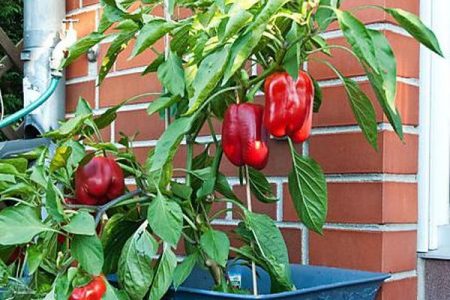
Variety with a bouquet arrangement of fruits, bred in Russia (1891). It is universal in use, not afraid of diseases, elevated or low temperatures. Winnie the Pooh is allowed to grow in any conditions.
Bushes up to 40 cm high are neat, standard. Peppers are thick-walled, juicy, red in the shape of a cone, smooth, slightly ribbed, weighing from 40 to 70 grams. The taste is sweet, pleasant, but closer to neutral. The fruit ripening is friendly, for the season you can collect up to 5 kilograms of harvest per square meter.
Dwarf
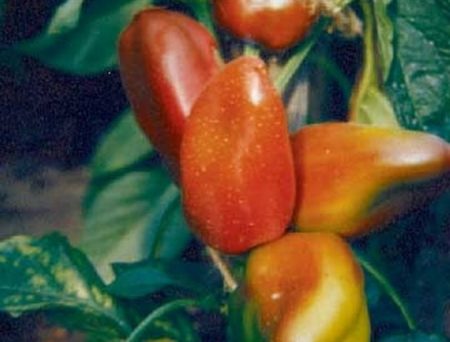
A variety approved for cultivation in sheltered soil or under film shelters. The dwarf does not suffer due to a slight decrease in temperature, rarely gets sick, but is demanding on mineral fertilizers. The plant is not higher than 40 cm neat, slightly branched. Peppers are juicy and tasty, cone-shaped red, thick-walled weighing up to 90 grams. The average yield is 5 kg / m².
Swallow
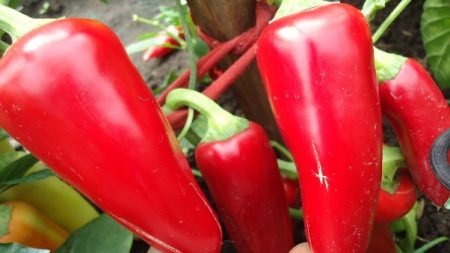
The variety is very valuable for its fertility (7 kg / m²) and fruit ripening. The bushes are compact, in the open ground they are slightly higher than half a meter, and in the greenhouse grow up to 80 cm. Resistance to fungi, rot and bacteria is excellent. Swallow is grown in any conditions. The fruits are red, thick-walled, in the shape of a cone weighing up to 100 grams. Taste is at a high level.
Snow White
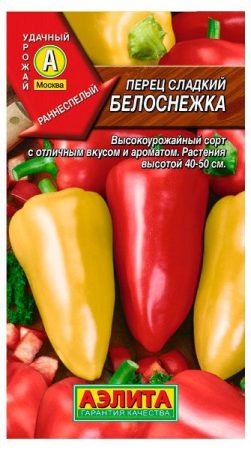
A variety with good disease immunity. In unprotected soil, it is extremely undesirable to grow it, if only in the south. The plants are closed, not more than half a meter, neat. The fruits are thick-walled, elongated-cuboid, red weighing from 100 to 150 grams. The pulp is slightly fibrous, juicy and tasty, with a bright pepper aroma. Productivity up to 7 kg / m².
Mid-season varieties
Here we describe the varieties ripening 120 or 130 days after germination of the seeds. These peppers are universal, they can be grown in all regions:
California Miracle
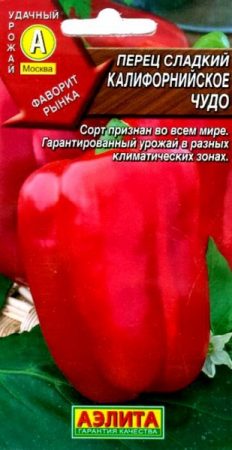
The variety can be planted in any conditions, it shows good resistance to temperature extremes and diseases. Bushes up to 70 cm tall, compact. Fruits are cuboid, red, thick-walled (9-10 mm) weighing up to 150 grams. The taste and aroma are saturated, peppers in use are universal. Crop ranges from 5 to 7 kg / m².
Gift of Moldova
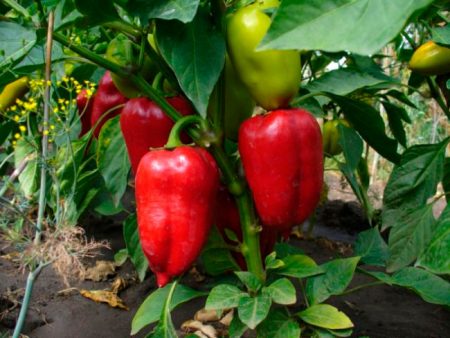
The height of the half-stem bush is about 60 cm, the variety is universal in use, resistant to all negative factors. Productivity with proper care is about 5 kg / m². The variety can be planted both in sheltered ground and on the street.
Fruits are conical, red, thick-walled weighing up to 120 grams. The pulp is of a very pleasant consistency, sweet and juicy, there is a rich pepper aroma. The variety is undemanding to care, suitable for beginners in gardening.
Orange king
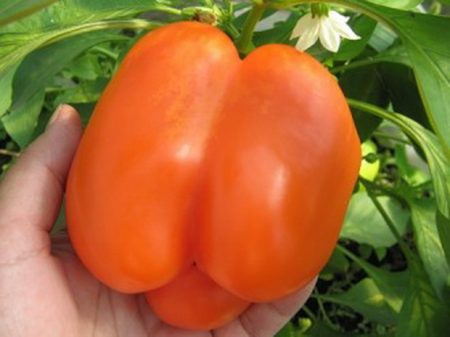
A variety that can be grown on the street only in the southern regions, in other cases it is planted in a greenhouse. It has a good immunity to diseases, and the fruits are universal in use. The bush is tall (need support and garter), closed, compact.
Prismatic peppers, shiny, thick-walled, orange weighing up to 250 grams. The pulp is juicy, no bitterness, one sweetness and bright aroma. With proper care from a square meter, up to 6 kilograms of the crop is harvested in open ground, and in closed ground up to 7, 5.
Late ripening varieties
Peppers ripening 140 days after the appearance of the first sprouts, it is desirable to grow them where the summer is long and the first months of autumn are warm. The best varieties and hybrids:
Gladiator
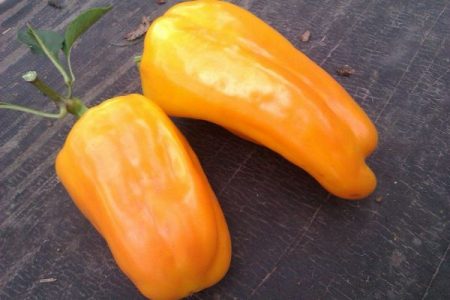
A variety from the Netherlands, suitable for any growing conditions, resistant to many diseases of the crop. Bushes are medium-sized, sprawling. Fruits are cuboid, slightly ribbed, yellow, weighing up to 350 grams. The wall thickness is about 13 mm, the pulp is juicy and tender, sweet, very pleasant to taste. There is an unobtrusive pepper aroma. Peppers in use are universal, yield up to 12 kg / m².
Black cardinal

A high-yielding (up to 10 kg / m²) hybrid of sweet pepper originally from Italy, has excellent immunity to diseases and adverse weather factors. The bush is medium in height, standard, compact. Peppers are universally used. The black cardinal is demanding on top dressing.
Fruits in the shape of a cone, thick-walled, dark purple, glossy weighing from 70 to 150 grams. The pulp is juicy and tender, the taste is rich sweet with a bright pepper aroma. Peppers are well stored and easily carry transportation over long distances.
Madonna
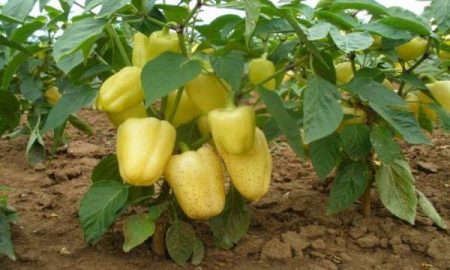
The hybrid of sweet pepper, which is best grown in greenhouses and under film shelters, perfectly develops even in partial shade. It is unpretentious and resistant to various adverse factors, and the fruits are universal in use.
The bush is powerful, branched with short internodes. Fruits of the block type are thick-walled (10–13 mm), red, weighing up to 250 grams. The taste is saturated, pleasant, the pulp is dense and juicy. Average productivity 6 kg / m².
Finally, I want to share a little trick that will contribute to obtaining an abundant harvest of sweet pepper. The culture, although self-pollinated, does not refuse helpers in the form of beneficial insects. You can attract pollinators by spraying peppers with a sugar solution (100 grams per 10 liters of water) with the addition of boric acid dissolved in hot water.
Reviews
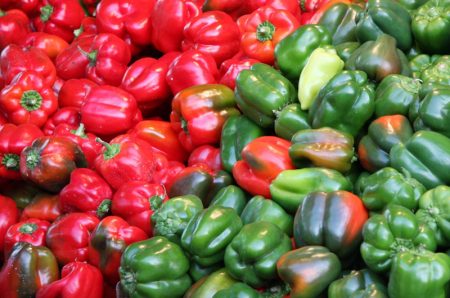
Sergey
When growing seedlings, so that the bores do not lean toward the window, I put reflectors, a mirror or cardboard covered in foil. Without additional light, of course, it is difficult to do, seedlings stretch, weaken, and for pepper it is very bad. From my favorite, productive varieties, I want to highlight the Karlik variety. It is very easy to care for him, it tastes good, has never let me down.
Victoria
I want to note 2 varieties from the presented list - Winnie the Pooh and Gift of Moldova, I grow them in the Leningrad region in a greenhouse. These peppers are proven, I have been planting them for many years, and every year they delight with plentiful harvests of beautiful, tasty, universal fruits. Last year I bought the Black Cardinal variety, I really liked it, growing it is easy, but the fruits change color when cooked.




 Calorie pepper stuffed with meat and rice - BZHU per 100 grams
Calorie pepper stuffed with meat and rice - BZHU per 100 grams Gorky pepper - the best varieties for open ground
Gorky pepper - the best varieties for open ground Hot pepper seeds - the best varieties for open ground and reviews
Hot pepper seeds - the best varieties for open ground and reviews Capsicum tincture for hair - how to use and reviews
Capsicum tincture for hair - how to use and reviews